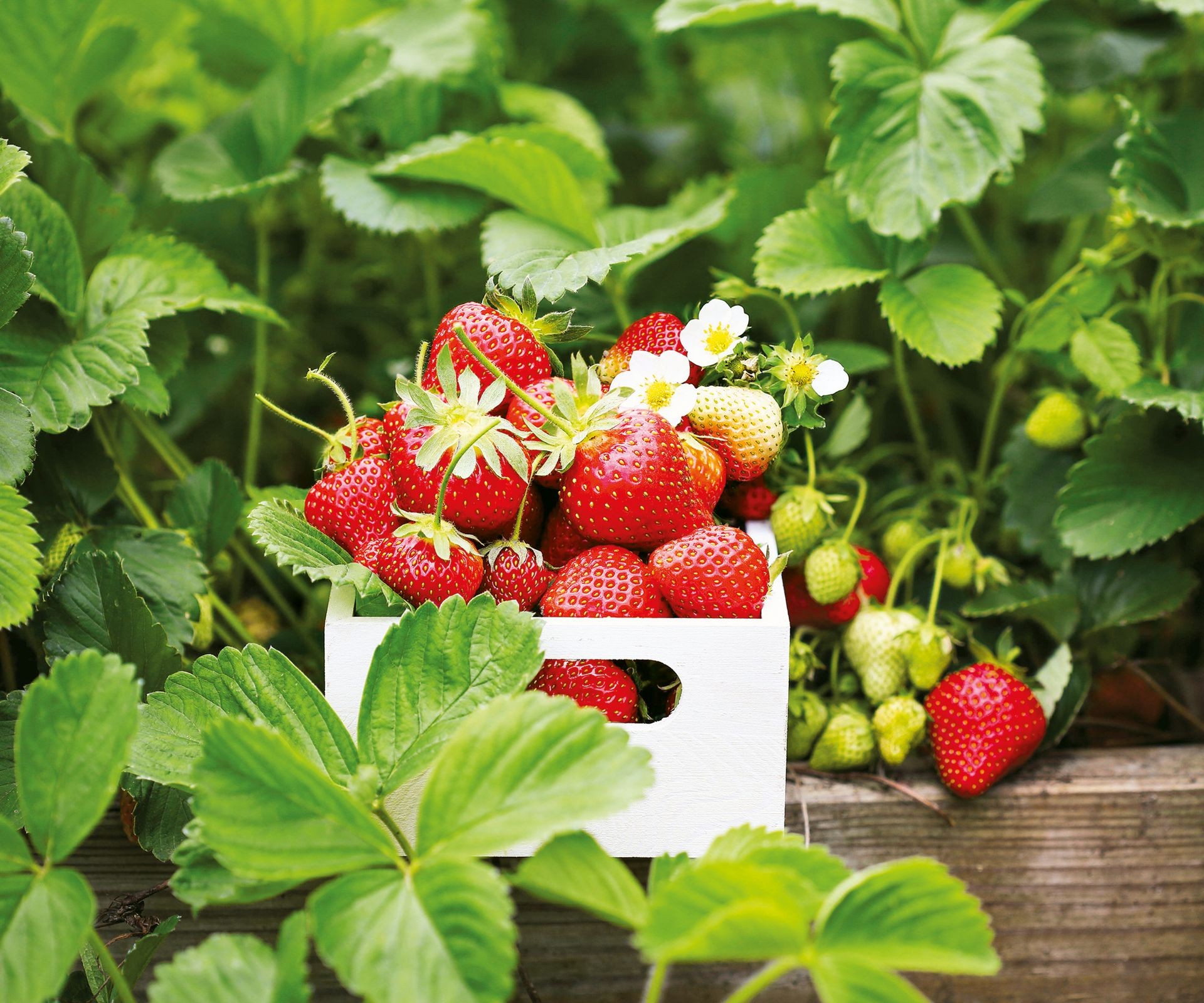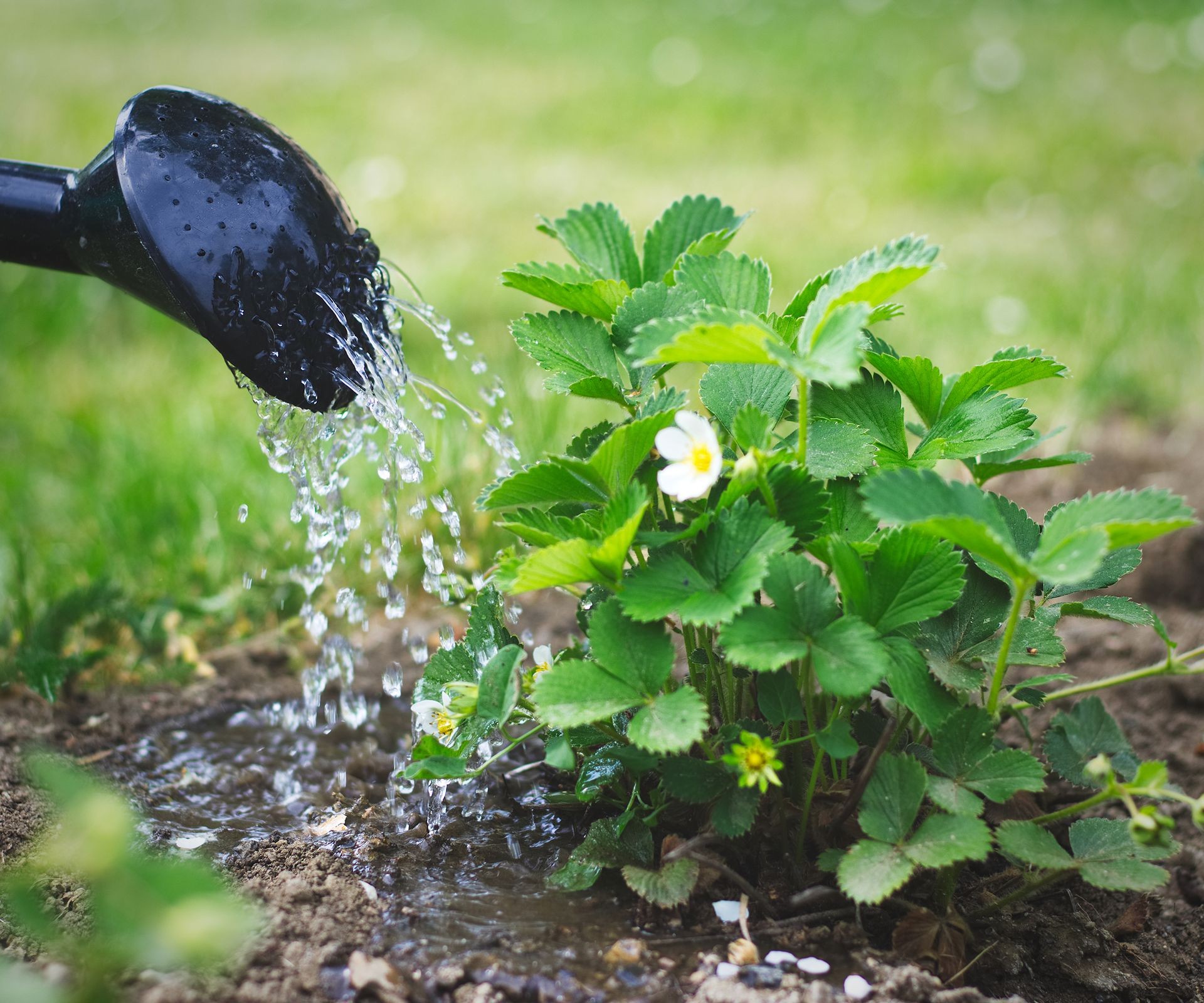No products in the cart.
NEWS
How to Grow Bigger Strawberries: Expert Strategies for a Bountiful Harvest
From classic shortcake to refreshing ice cream, strawberries are a beloved fruit worldwide. Their vibrant color, delightful fragrance, and sweet-tart burst of flavor make them a garden favorite. Many home growers dream of achieving not just a good harvest, but a truly impressive one, filled with larger-than-average berries. While size isn’t the only measure of a great strawberry – smaller fruits often boast a more concentrated, intense flavor profile – cultivating larger berries for maximum yield is a rewarding goal that is certainly achievable with the right approach.
Successfully growing strawberries is relatively straightforward. These versatile plants can thrive in various settings, from dedicated garden beds with amended soil to specialized containers like tiered strawberry pots. They are generally easy to care for and can provide abundant harvests. If your ambition is to cultivate strawberries that stand out for their size, implementing specific techniques can make a significant difference.
The Quest for Larger Strawberries
While genetics play a primary role – some cultivars are specifically bred for their impressive fruit size – superior growing practices can significantly enhance the size of the berries your plants produce. Understanding the factors that influence fruit development is key to unlocking their full potential.
It’s worth noting, as many seasoned growers know, that focusing solely on size doesn’t always equate to the best taste experience. Larger berries can sometimes hold more water, which might slightly dilute their flavor compared to their smaller, more intensely flavored counterparts. However, if maximizing fruit size is your objective, these expert tips will guide you.
 Freshly harvested large strawberries fill a wooden crate, showcasing a successful crop.
Freshly harvested large strawberries fill a wooden crate, showcasing a successful crop.
Key Strategies for Cultivating Bigger Strawberries
Achieving impressive berry size involves a combination of selecting the right plants and providing optimal care throughout their growth cycle.
Choose the Right Varieties
The most direct path to growing bigger strawberries begins with selecting cultivars known for producing large fruit. Commercial breeders invest heavily in developing varieties that yield substantial berries, often balancing size with other desirable traits like firmness, transportability, and flavor.
Strawberry plants come in different types based on their fruiting habits.
- June-bearing varieties typically produce a single, large crop over a two to three-week period in late spring or early summer. These are often the best choice for gardeners prioritizing large fruit size and a concentrated harvest. They are commonly classified as early, mid-season, or late blooming.
- Everbearing varieties attempt to produce more than one crop throughout the season, often yielding berries in late spring and again in late summer/early fall. While productive, the individual berries from everbearers may sometimes be slightly smaller than those from June-bearers, though many newer everbearing cultivars produce good-sized fruit. They generally require at least 12 hours of sunlight daily.
- Day-neutral varieties produce fruit continuously from summer until frost, regardless of day length (as long as temperatures are suitable). These plants are known for yielding large, firm berries consistently throughout the growing season. They are considered quite hardy.
Selecting cultivars that offer resistance to common strawberry diseases can also contribute to more vigorous plant growth, which in turn supports larger fruit development.
Here are some varieties recognized for their larger berry size, based on common selections:
- Allstar: Known for well-formed, glossy mid-season berries.
- Chandler: Produces large, firm berries with glossy red skin.
- Diamante: Yields big, deeply red, classic-shaped fruits, often favored for confections.
- Jewel: Renowned for producing large berries and offering high yields over a long season.
- Juliette: Features large, distinctively cone-shaped berries.
- Ozark Beauty: An everbearing variety noted for its relatively large and sweet fruits.
- Sundrench: An early-season variety producing pointed berries with classic flavor.
- Surecrop: While sometimes irregularly shaped, this variety offers superior flavor along with good size potential.
Master the Growing Environment
Providing ideal conditions is crucial for encouraging plants to channel energy into fruit production and size. Plant strawberries in early spring or fall for best establishment.
- Soil: Strawberries thrive in good, well-draining, loamy soil. A slightly acidic pH between 5.5 and 6.8 is optimal. Incorporating well-rotted organic matter like compost or aged manure into the top few inches of the planting bed provides essential nutrients and improves soil structure.
- Spacing: Allow adequate space between plants. Strawberries produce runners, which help the plant spread, so providing room ensures good air circulation and prevents overcrowding as the patch matures.
- Sunlight: June-bearing varieties generally need 6-8 hours of sunlight per day. Everbearing and day-neutral varieties perform best with a full day (at least 12 hours) of direct sun to maximize their production potential, including fruit size.
- Watering: Consistent moisture is vital, especially when fruits are developing. Drip irrigation is highly recommended as it keeps the soil consistently moist while keeping leaves dry, significantly reducing the risk of fungal diseases. Aim for about 1-1.5 inches of water per week, adjusting for rainfall and temperature.
- Mulching: Applying mulch around your strawberry plants helps in several ways: it suppresses weeds that compete for nutrients and water, keeps the soil temperature cooler during hot periods, and most importantly, helps retain soil moisture, providing the consistent hydration needed for fruit expansion.
 Drip irrigation system waters strawberry plants in a garden bed, demonstrating effective moisture management.
Drip irrigation system waters strawberry plants in a garden bed, demonstrating effective moisture management.
Optimize Nutrition with Fertilization
Proper feeding ensures your strawberry plants have the energy reserves required to produce large fruits. Fertilization is typically most beneficial in early spring as growth begins and again when berries start to form.
A balanced granular fertilizer, such as a 10-10-10 formula, applied in spring can provide nutrients throughout the season, particularly for container-grown plants. Some experts suggest that supplementing with a fertilizer higher in potassium during the flowering and fruiting stages can specifically promote larger and more numerous berries.
For those preferring organic methods, options like bone meal and rock phosphate are excellent sources of phosphorus and calcium, both beneficial for flowering and fruiting. Kelp meal, soybean meal, and blood meal also provide nutrients. Gently work these organic amendments into the soil surface to avoid disturbing the plants’ roots and runners.
Pruning for Productivity: Remove Runners
One of the most impactful practices for encouraging larger berries is the strategic removal of runners. After your strawberry plants have become well-established (typically after their first year), you will notice they send out long stems or “runners” that attempt to root and create new plants.
While useful for propagation, runner production diverts energy that the mother plant could otherwise use for developing larger and more abundant fruit. During the flowering and fruiting period, regularly snip or pinch off these runners. By preventing the plant from investing energy in multiplying itself, you redirect that vitality towards maximizing the size and yield of the current season’s berries. This simple task can yield significant results.
Patience Pays Off: Nurturing Maturity
Young strawberry plants, especially in their first year after planting, tend to produce smaller berries. Mature, well-established plants have developed stronger root systems and foliage, giving them the capacity to support larger fruit development.
Many experienced gardeners choose to sacrifice the first year’s harvest for future gains. By pinching off all the flowers that appear in the plant’s first year, you prevent it from fruiting. This allows the young plant to channel all its energy into establishing a robust root system and healthy crown, setting the stage for a much stronger, more productive plant in subsequent years, capable of producing significantly larger berries.
With patience and the implementation of these techniques – selecting the right varieties, optimizing growing conditions, providing adequate nutrition, managing runners, and allowing plants to mature – you’ll be well on your way to harvesting the biggest, most succulent strawberries your garden can produce.
Ready to cultivate your most impressive strawberry harvest yet? Explore the resources and quality gardening inputs available through Biogarden.asia to support your journey towards bigger, more bountiful berries.



